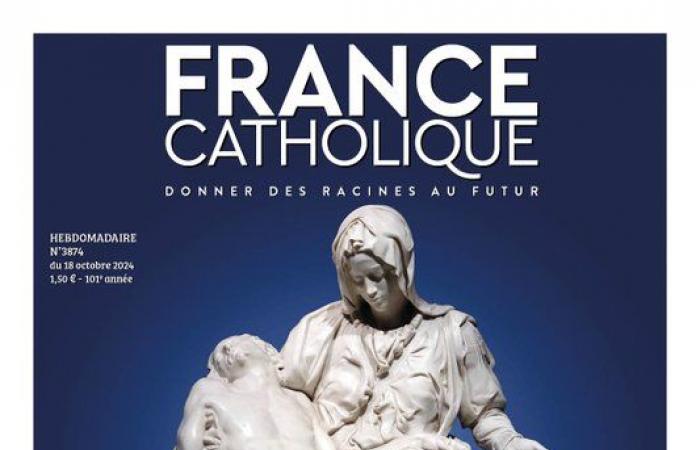
460 years after the death of Michelangelo, Catholic France devotes its issue to this unrivaled genius and precursor. Sculptor, painter, architect, poet: he embodies the complete artist. Through his quest for perfect beauty, he was also, and above all, a seeker of God. Emilie Pourbaix writes:
“I am the One who made, from your earliest years, / your ingenuous eyes turn towards the beauty / Which, from earth to Heaven, all living things elevate you. » In these verses, taken from his poems, Michelangelo, making God speak, evokes his absolute thirst for beauty, behind which, more and more, he will discern the call of God. This thirst, which has irrigated and guided all his work, is the main key to understanding this extraordinary artist whose Art, seeking “to link the beautiful and the good”East “like the shadow of divine perfections”wrote Henri Charlier (1883-1975), himself a painter and author of essays on art (Art and Thought1972).
In the middle of the Quattrocento – the golden age of the Italian Renaissance – Michelangelo di Lodovico Buonarroti Simoni was born in 1475 into a poor family in Caprese, near Florence. After losing his mother at the age of 6, he left his family and school at the age of 12, to satisfy his passion for drawing and realize his dream, by entering the workshop of the famous painter Ghirlandaio. Two years later, the latter sent him to Lorenzo de Medici – the Magnificent –, an enlightened patron and political tyrant of Florence.
This great art lover then looked for promising young sculptors to copy, in his school of artists, Roman and Greek statues, which the Renaissance rediscovered with fascination. Located in the gardens of the San Marco convent, the Medici brought together their collection of ancient statuary to form an academy, a true small center of the artistic and intellectual world. The young 14-year-old apprentice became a student of Bertoldo di Giovanni, himself a student of the great Donatello. From now on he will always define himself as a sculptor. The Magnificent is won over by his precocious talent and makes him his protégé. In this elite place, the adolescent also received the humanist teaching of Neoplatonic philosophy, with Jean Pic de la Mirandola and Marsile Ficino. […]
Post Views: 662





